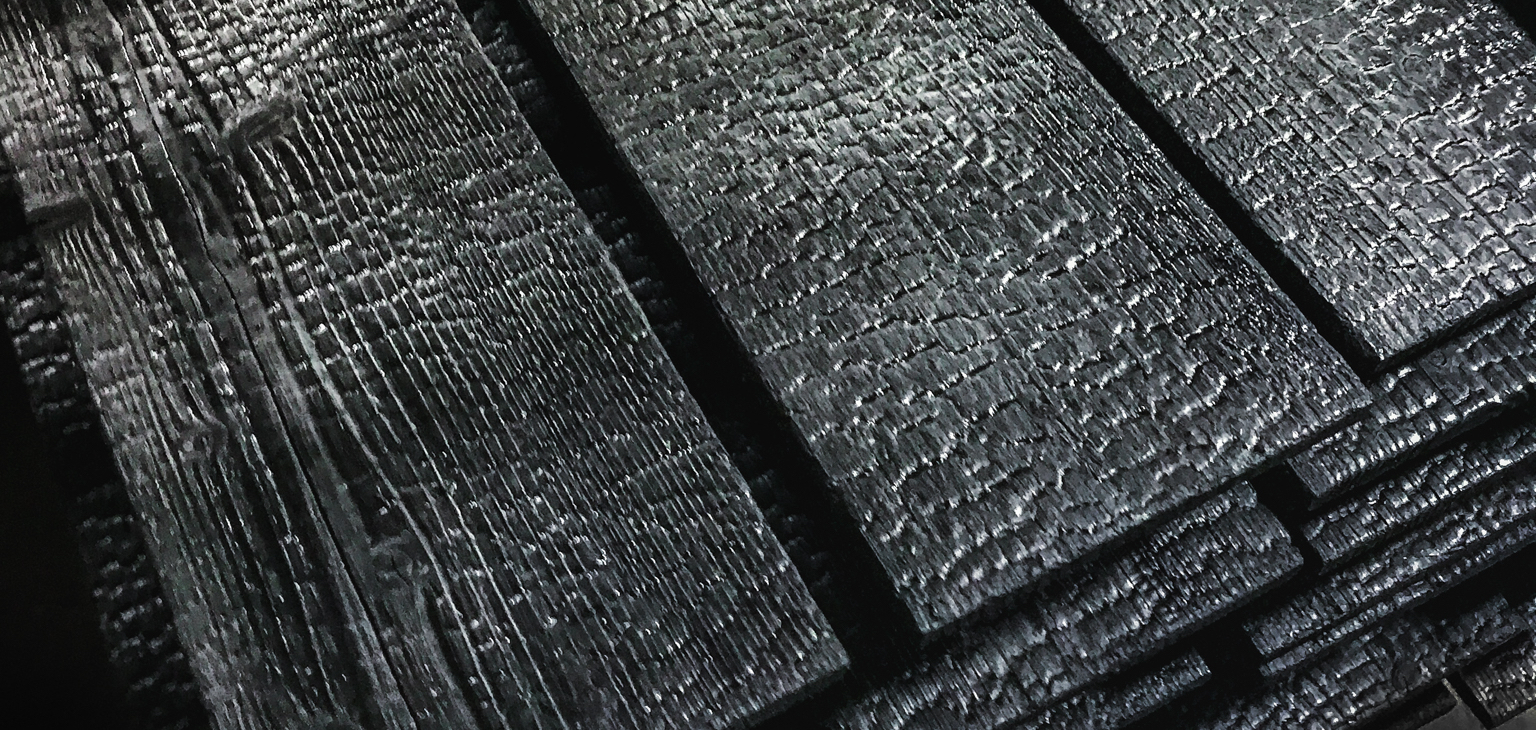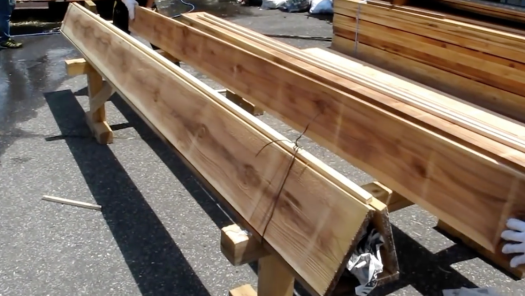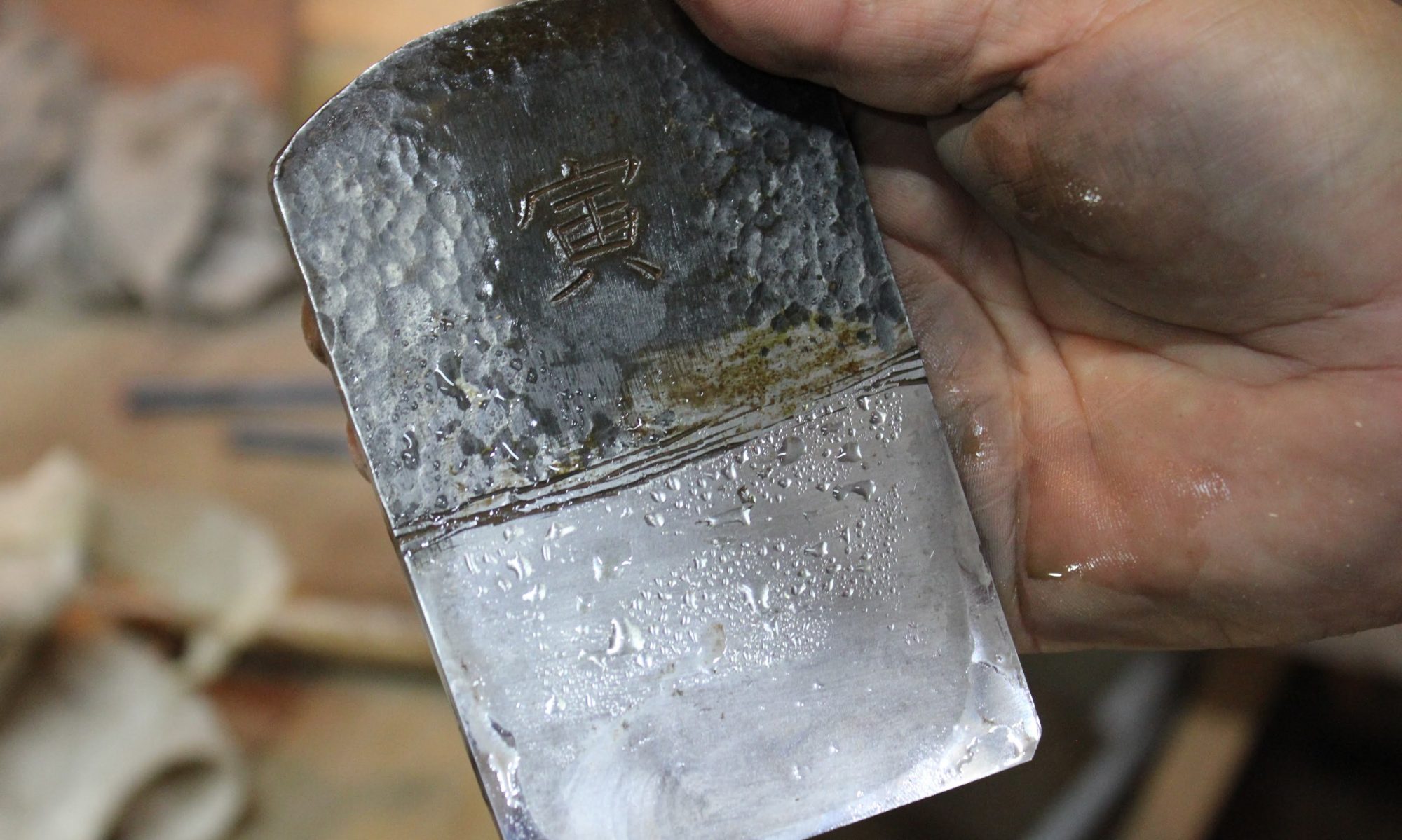Origins
Yakisugi (焼杉) can be literally translated as “burned cedar”. It has been used as a traditional method to protect timber siding surfaces, mostly for exterior cladding on traditional Japanese houses, when there was still no means of chemical wood protection. This method of Yakisugi improves siding longevity by preventing decay; insect and mould infestation; makes the planks more dimensionally stable and improves fire retardancy.

Yakisugi is also now commonly know as “Shou Sugi Ban” – with Sugi having the same meaning as Sugi in Yakisugi. Shou is a misspelled reading of “Yaki”, so basically they have the identical meaning. While Yakisugi is the common name for this method in Japan, nearly nobody in Japan would understand the term “Shou Sugi Ban”.
Japan is a country full of forests, more than 66% of the country are covered with forest, making it the No. 3 globally in terms of forest-rich countries (after Finland and Sweden). Timber as construction material has been common in Japan for ages, recently only replaced by concrete in major cities.
Traditional Process
Yakisugi production is usually divided into manual burning (手焼き) or machine burning (機械焼き), where the burning process is largely automated.
Here we will concentrate on the traditional, craft manual burning procedure, as demonstrated in the video below.
In the traditional procedure, three boards of Sugi will be bound together to form a triangle. After binding the boards tight, fire is lit on the very bottom with some paper or newspapers. It then takes a minute or two for the fire to proliferate, usually it starts to spread fairly quick due to the chimney or stack-effect from the triangle of boards. The time required until finish depends on the initial moisture grade of the timber as well as the desired degree of burning. In order to let the outer 3-4 mm charred, it usually will not exceed ca. 5 minutes. In this traditional way to burn, the heat inside the triangle needs at least 250°, but mostly reaches >400°C. After reaching the desired grade, the triangle is opened and the fire extinguished by applying water.

The boards are traditionally burned from the Ura (裏), i.e. the outside of the board. It is also important to dry down the timber boards before burning, ideally to somewhat 10-15%. This ensures good results in the burning process, reduced warping and increased longevity. In past times, the whole process was done by carpenters mostly on a nearby dam aside a river or on harvested rice fields. Yakisugi as a tradition can still be seen in numerous places throughout Western Japan (in Kyoto area also known as Yakiita), where it is still very common. In those areas, Yakisugi is positioned as traditional, standard, utility wood siding, affordably priced and with improved longevity over untreated wood. While in the West it has raised increased attention in recent years due to its trendy and contemporary appearance – something “special” which perfectly pays to the modern individualized taste, as well as its sustainable and eco- and climate-friendly attributes.

Manufacturing Process
The biggest manufacturers in Japan are all located in Western Japan, they include: Nakamoto Zourin (中本造林株式会社), the biggest producer of Yakisugi in Japan, located in Hiroshima prefecture, then Daietsu (株式会社ダイエツ) from Shiga prefecture, Hirakawa Timber (株式会社平川木材工業) from Fukushima prefecture, Yuki Timber Manufacturing (株式会社ユウキ木産) from Oita prefecture, Kyoei Timber (株式会社共栄木材) from Ehime prefecture as well as Saitou Timber (齋藤木材株式会社) from Shimane prefecture.
Also in Europe, quite a few providers have been established in recent years, proof of the rising interest in Yakisugi also here. Nakamoto Forestry Europe, being the distributor of Nakamoto Zourin, the biggest producer of Yakisugi, is the only one supplying the original Yakisugi from Japan, made from Sugi (Japanese cypress) timber.
From their local warehouse with local stocj in Germany, they are supplying all over Europe. Others in Europe include Shousugiban Ltd. from the UK; Zwarthout from the Netherlands and several others in France, Germany, Poland, Lithuania and a few other countries. Most of European providers have been established in recent years and only a few master the Japanese skilled and experienced process to burn the timber – producing Yakisugi is not only about aesthetics and the beauty of the product but also durability and sustainability of the products.

Fujimori Terunobu
All of the major manufacturers have been producing Yakisugi for decades. While all of the major parties do machine burning, there are still quite some craftsmen burning the traditional way, many of them known only locally. A few artists and architects also are experimenting with the manual burning process. Among others, the most promiment one is Fujimori Terunobu (see video above), an internationally known architect, who has also designed the Japan pavilion at Venice biennale before. He loves to burn and has showcased several contemporary works incorporating Yakisugi and thus sparked new interest into this old tradition.
Contributor
This article was written and contributed by Martin Gottschlich, Managing Director | Nakamoto Forestry Europe | www.nakamotoforestry.eu

